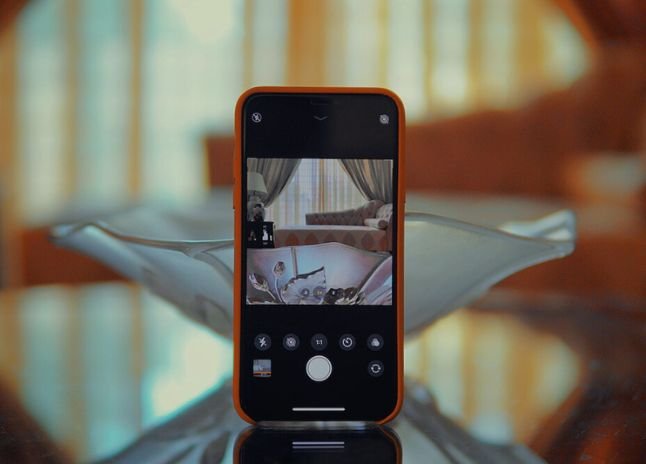Because There Is An Ultra-Wideband (UWB) Chip In The Iphone 11
One of the iPhone 11’s most interesting new features is the presence of an Ultra Wideband (UWB) chip called U1 . Apple has decided to embrace this technology, already used in other areas such as logistics and retail, to make room for a series of possible applications that could open up unexpected scenarios.
What Is Ultra Wideband?
Ultra Wideband is an identification technology based on radio frequencies. Therefore, it can be included in the broader set of RFID technologies. Unlike the classic version of the latter, it uses much higher frequencies. In any case, passive RFID refers to cla, which refers to frequencies (low frequency, high frequency, and ultra-high frequency), and active RFID refers to ult, which refers. Ultra Wideband technology is used for identification purposes and, above all, for the spatial localization of devices (and consequently of people) in real-time, i.e., for RTLS (Real Time Location Systems) solutions.
What Is The U1 Ultra Wideband Chip In The Iphone 11 For?
Having made this necessary theoretical premise on the functioning of Ultra Wideband technology, let’s understand why Apple decided to insert a UWB chip inside its iPhone 11 and iPhone 11 Pro. The Apple U1 chip will exploit the best practical application of this technology, that of the spatial detection of devices. In particular, iPhone 11 (and probably subsequent models) worldwide can detect each other ideally in a given space radius.
This functionality, until now, has been entrusted to Bluetooth technology, which, however, is much less precise and accurate than Ultra Wideband. This ability to locate and recognize iPhones equipped with the Apple U1 chip opens up a series of application scenarios that could change many actions in our daily lives.
Iphone 11 And UWB: Which Applications
During the presentation of the iPhone 11, Apple itself revealed the presence of the U1 chip and its first use. This is the “AirDrop” application which allows the transfer of files from one iPhone to another; from now on, this data transfer will exploit Ultra WideBand technology, which will be able to immediately identify the presence of another similar smartphone ( equipped with a U1 chip) and allow swift and accurate data exchange, effectively perfecting an app that, until now, relied on Bluetooth connectivity.
The greater precision of spatial localization and detection of the new iPhone will make the “Find My” app much more reliable and precise in knowing precisely where your smartphone is (for example, in the event of loss or theft). Of course, this functionality could also be extended to other Apple devices (which in the future should be equipped with U1 chips), such as iPad, iWatch, iMac, and Apple TV. This allows you to create a real network in which each device can locate the other and exchange data.
This possibility of dialogue between devices leads us to think that Apple could soon set up an IoT system oriented towards remote control of various devices, an even more advanced home automation. Naturally, this will also have repercussions in the industrial sector, where Ultra Wideband is already widely used in the logistics environment for the precision geo-localization of people, vehicles, products, and so on, with a notable increase in the efficiency and productivity of logistical activities, a substantial reduction in the risk of accidents and a clear improvement in flow thanks to data collection.
There will also be significant benefits in the world of retail. The idea of including Ultra Wideband in the new iPhones has its genesis in the iBeacon project that Apple developed a few years ago. It involved using beacons (Bluetooth receivers) to locate Bluetooth devices (primarily smartphones) inside closed environments such as shops.
The primary purpose was to conduct proximity marketing actions and have analytics to improve point-of-sale management. Ultra Wideband will replace Bluetooth in this application, providing (through the installation of a certain number of anchors) the position and precise movements in real time of the iPhones (and, therefore, of people) inside the store. This will allow you to send real-time notifications and offers on specific products and collect data.
The Car Also Features Ultra-Wideband
Among the devices connected to Ultra Wideband, cars will soon be other commonly used objects. Car manufacturers are among the most active supporters of Ultra Wideband technology, to the point of being present in the two technological consortia for developing this technology.
Even the world of cars could make considerable use of it, both to always precisely locate the vehicle and, naturally, to use applications for connecting to other devices and insert new functions (for example, closing and opening doors or ignition in the presence of the unique UWB chip). Many of the technological applications of Ultra Wideband are not even imaginable yet, but what is certain is that if a giant like Apple decided to focus on this technology, the growth margins would be high.
Read Also: iPad Pro M3 (OLED, 2024): Supposed Technical Sheet, Price & Reviews
Share this content:











Post Comment